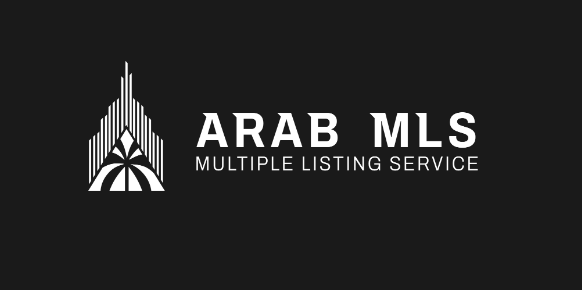In today’s real estate landscape, homebuyers are looking for more than just a property; they are searching for the perfect neighborhood to match their lifestyle, preferences, and long-term goals. Understanding a neighborhood’s character, amenities, safety, and community vibe is often just as important, if not more so, than the house itself. Traditional MLS platforms, however, typically focus on property listings, leaving much of the neighborhood information to be explored by buyers through separate channels.
Allowing buyers to tag and review neighborhoods within an MLS platform could significantly enhance the home-buying experience by offering a more comprehensive view of potential living areas. This feature would empower consumers with the insights and information they need to make more informed, confident decisions. It would also create a more dynamic, interactive environment where the broader real estate community—buyers, sellers, agents, and even residents—can engage with one another.
This article will explore the advantages, challenges, and potential solutions for integrating neighborhood tagging and reviews into MLS platforms.
Why Neighborhood Reviews Matter
For many buyers, choosing a neighborhood is just as important as selecting the right home. Factors such as proximity to schools, public transportation, amenities, safety, and overall community atmosphere can have a huge impact on a buyer’s decision. Traditionally, this information has been sourced from agents, friends, family, and general research on websites. However, the subjectivity and incomplete nature of these sources can often leave gaps in a buyer’s understanding of a neighborhood.
A robust neighborhood tagging and review system within an MLS would allow homebuyers to:
- Discover Hidden Gems: Some great neighborhoods might not be heavily marketed, and homebuyers may be unaware of their potential. A review system can help bring attention to these underrated areas.
- Evaluate Key Attributes: Reviews can give insights into aspects like the quality of local schools, the availability of parks and recreation centers, transportation links, the overall safety of the area, and local entertainment options. These insights can only be garnered through the experiences of people who already live in or frequently visit the neighborhood.
- Access Real, Unfiltered Opinions: Homebuyers want real opinions from people who have lived in the area, rather than just advertisements or agent promotions. Reviews provide direct insights from residents or other buyers.
Benefits of Allowing Buyers to Tag and Review Neighborhoods

1. Enhanced Decision-Making for Buyers
Having access to reviews and tags can empower homebuyers to make better-informed decisions. For instance, a buyer could discover through reviews that a certain neighborhood is known for its vibrant community events, or perhaps a quiet area with minimal traffic. This kind of information can help buyers choose a neighborhood that fits their lifestyle, beyond just what the property offers. Additionally, seeing a mix of ratings and opinions can give a more well-rounded view of the neighborhood, allowing buyers to weigh the pros and cons more effectively.
2. Building Trust and Transparency
Transparency in real estate is crucial. Allowing neighborhood reviews directly within the MLS promotes openness and builds trust between real estate professionals and buyers. Clients can get an unfiltered view of what it’s like to live in a particular area, based on feedback from residents and others familiar with the neighborhood. As with agent ratings and reviews, this increases confidence in the MLS platform, as clients feel they are receiving genuine, balanced information.
3. Increased Engagement for MLS Platforms
Incorporating neighborhood tagging and reviews can enhance engagement within MLS platforms. Homebuyers, sellers, and even agents will have more reasons to interact with the platform regularly. Instead of simply browsing properties, users will be encouraged to leave their reviews and contribute to the neighborhood conversation. This dynamic can create a thriving community within the MLS, leading to more traffic and user retention.
4. Increased Agent-Client Collaboration
Real estate agents can leverage neighborhood reviews to help buyers find areas they may not have initially considered. For example, if a buyer is looking for a family-friendly neighborhood but doesn’t know where to start, an agent can suggest neighborhoods that have received positive reviews for their safety and schools. Having up-to-date reviews from real residents helps agents provide better service and create a more tailored experience for their clients.
5. Encouraging More Informed Conversations
Neighborhood reviews allow for more nuanced discussions about local trends, amenities, and potential drawbacks. Instead of relying solely on outdated statistics or hearsay, buyers can read first-hand accounts of what it’s really like to live in a neighborhood. The ability to tag neighborhoods with specific keywords such as “family-friendly,” “walkable,” or “up-and-coming” can make these conversations even more informative, allowing buyers to sort and filter neighborhoods based on their personal preferences.
How Neighborhood Tagging and Reviews Could Work
To integrate this feature successfully within an MLS platform, several key components should be considered:
1. Neighborhood Tags and Categories
Neighborhood tags are a simple yet effective way to categorize and filter properties and areas based on specific features or characteristics. Tags could include terms like “pet-friendly,” “near public transit,” “great for young professionals,” “safe for families,” or “vibrant nightlife.” These tags would make it easy for buyers to search for neighborhoods that meet their specific needs.
- Geographical Tags: Areas could be tagged based on proximity to major landmarks, such as downtown, parks, or entertainment hubs.
- Lifestyle Tags: Buyers could look for neighborhoods that align with their lifestyle preferences—such as “quiet,” “urban,” “suburban,” or “close to nightlife.”
- Feature Tags: Tags related to local amenities like “good schools,” “parks nearby,” or “low crime rates” could be particularly useful.
2. Rating System for Neighborhoods
Similar to agent or property reviews, a rating system for neighborhoods could help summarize key features of an area. Each neighborhood could receive an overall rating (e.g., 1 to 5 stars) based on user feedback. This rating could cover several factors:
- Safety
- Community atmosphere
- Quality of local amenities (schools, parks, shopping, etc.)
- Noise levels
- Affordability
Buyers could also leave written reviews that delve into specifics, offering insights into why a particular neighborhood deserves a high or low rating. To avoid biased reviews, the system could restrict reviews to verified homebuyers or residents, ensuring authenticity.
3. Filtering and Sorting Features
MLS platforms could implement filters to allow users to sort and view neighborhoods based on their ratings and specific tags. For example, a buyer could filter neighborhoods by those that are rated highly for safety or search for neighborhoods that are specifically recommended for families with young children. Customizable search filters would enable buyers to narrow down their options based on personal preferences and lifestyle needs.
4. Integration with Property Listings
To make the neighborhood review and tagging system more valuable, it could be integrated with property listings. This means that when a user searches for properties in a particular area, they can immediately see the relevant neighborhood tags and ratings. This provides context about the area and allows buyers to make better comparisons between homes in different neighborhoods.
5. Community Engagement
In addition to buyers and sellers, residents and businesses could also be encouraged to contribute their opinions. For example, local businesses could leave feedback on the advantages of living in the neighborhood, while residents could share personal stories about their experiences. This broader community engagement would help create a more comprehensive and diverse picture of what it’s like to live in a neighborhood.
Challenges to Consider
1. Avoiding Bias and Fraud
As with any review system, there’s a potential risk of biased or fraudulent reviews. Neighborhood reviews could be influenced by personal preferences or past experiences that don’t reflect the overall reality of the area. MLS platforms would need to implement measures to validate reviews and ensure they are coming from legitimate sources. One way to address this is by requiring a verification process for reviews, such as cross-referencing user data or using verified real estate transactions.
2. Privacy Concerns
Some buyers or residents might be wary of sharing detailed personal experiences about their neighborhoods due to privacy concerns. MLS platforms would need to ensure that reviews are anonymous or that personal information is protected. Users should be able to leave honest feedback without feeling exposed.
3. Ensuring Accurate Information
Neighborhoods can change over time, so reviews need to be regularly updated to ensure their accuracy. MLS platforms should consider incorporating time-stamped reviews and encourage users to update their opinions if they notice any changes in the area, such as new amenities or changes in the neighborhood’s safety. This ensures that the platform remains current and relevant for all users.
Conclusion
Allowing buyers to tag and review neighborhoods within an MLS platform represents a major step forward in creating a more transparent, user-driven real estate experience. Neighborhood insights and feedback can play a crucial role in helping homebuyers make well-informed decisions about where they want to live. By combining property listings with dynamic neighborhood reviews, MLS platforms can provide a holistic view of the entire home-buying process, allowing clients to select neighborhoods that best align with their lifestyles and preferences. Ultimately, this approach fosters a more engaging, transparent, and empowered real estate market for both buyers and agents alike.













